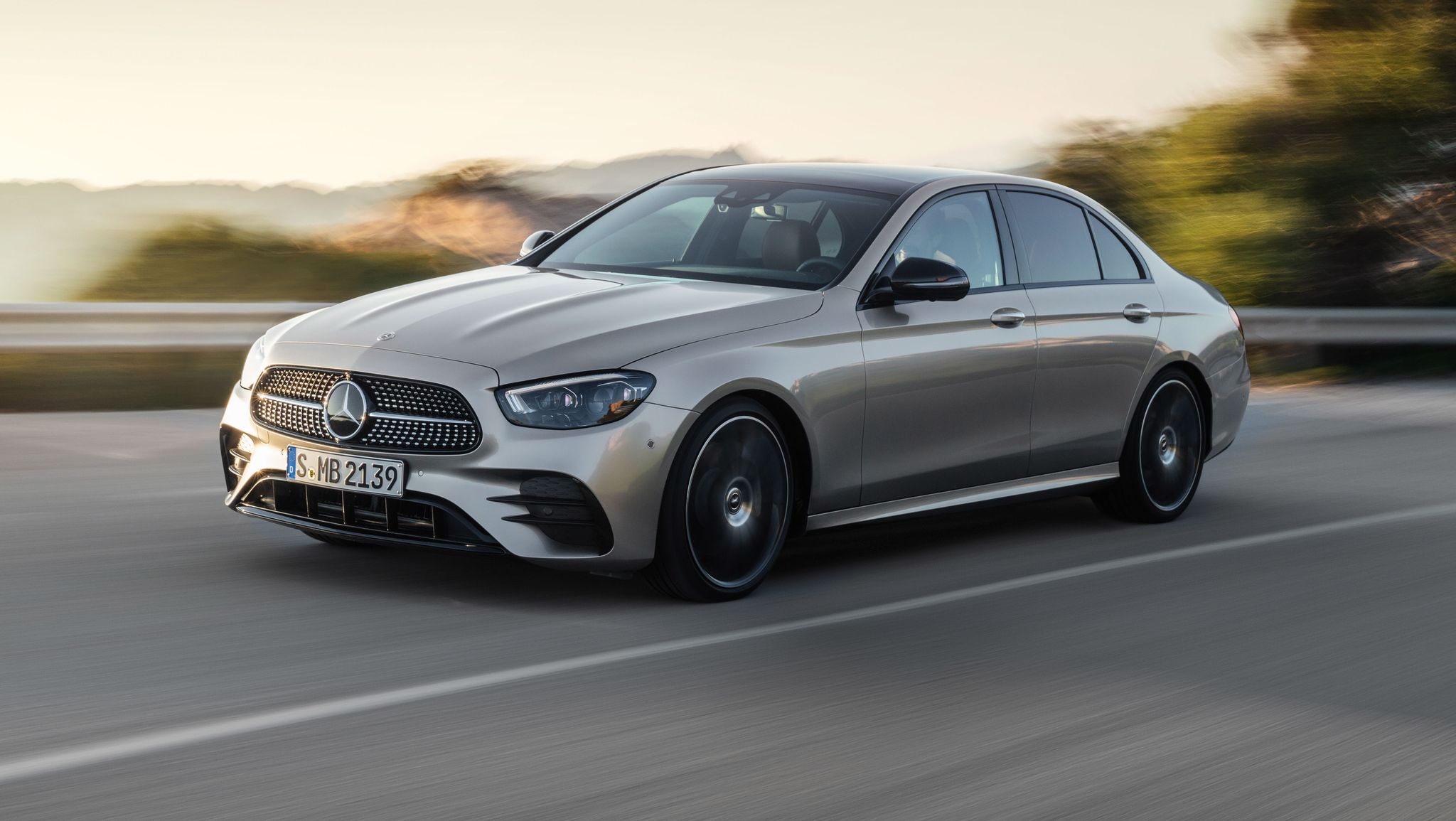When choosing a car, most buyers focus on engine power, fuel efficiency, or high-tech features. But one of the most fundamental factors affecting the driving experience is often overlooked: cabin noise. The sound environment inside a vehicle plays a critical role in driver comfort, stress levels, and overall enjoyment.
A quiet cabin makes long drives relaxing, conversations clear, and the music crisp. On the other hand, excessive road noise, wind whistling, or engine buzzing can quickly wear on occupants, making even a short trip feel exhausting.
Car manufacturers put a great deal of effort into controlling and reducing cabin noise, as it is a key marker of refinement and build quality. Premium vehicles invest in thick insulation, specialized glass, tight seals, and aerodynamic design to minimize external noise intrusion.
Some also use active noise cancellation systems to electronically dampen unwanted frequencies. Meanwhile, mass-market models often have to balance cost with noise control, resulting in a wide spectrum of cabin quietness.
In this article, we’ll explore 5 cars renowned for their near-silent interiors—vehicles that make a priority of insulation and craftsmanship to deliver a serene environment, free from unwanted sound distractions. These cars demonstrate how manufacturers can create a haven from the chaos of the road, allowing drivers to focus or simply unwind.
Their soundproofing excellence adds tangible value to the ownership experience, making them favorites among commuters and road-trippers alike.
Conversely, we’ll also look at 5 vehicles infamous for constant buzzing and noise inside the cabin. Whether due to design shortcuts, aging materials, or inherent engineering flaws, these cars allow intrusive noise to permeate, creating a persistent hum, buzz, or rattle that distracts and annoys occupants.
Such noise can detract from a car’s appeal and make driving tiring or stressful. Recognizing which cars struggle with cabin noise helps prospective buyers make better-informed decisions and avoid common pitfalls.
By the end, readers will appreciate the importance of sound insulation and understand what to look for in a vehicle’s design to ensure a quiet, comfortable ride. Whether you’re a daily commuter, weekend adventurer, or road trip enthusiast, the state of your car’s interior sound environment greatly shapes your experience behind the wheel.
ALSO READ: 5 Cars With Cheap Registration and 5 That Cost a Fortune in Every State
5 Cars That Buzz Constantly
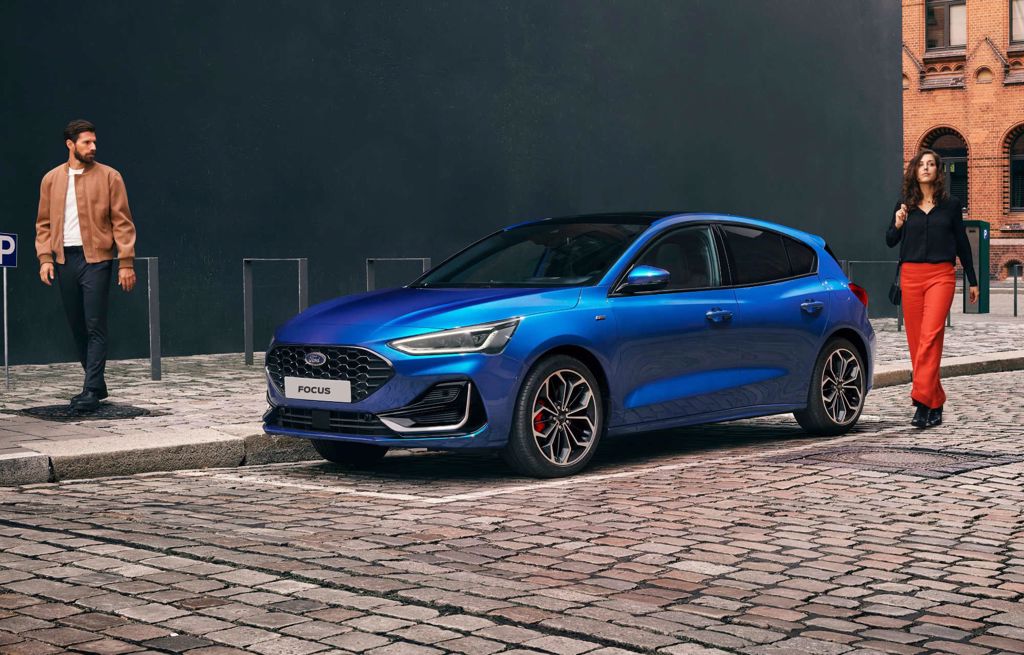
1. Ford Focus (Certain Model Years)
The Ford Focus, especially models from the early 2010s, has become somewhat infamous for persistent window buzzing and rattling noises that plague its cabin.
One of the core reasons behind this issue lies in the design of the window regulator and sealing system. The window regulators in these models sometimes fail to maintain perfect alignment between the glass and the door frame, causing the window to rub against the rubber seals or inner trim.
This misalignment generates a characteristic buzzing or vibration, particularly noticeable when driving on rough roads or at certain speeds. Additionally, the factory-installed rubber seals can harden or shrink over time, reducing their effectiveness at cushioning the glass and allowing vibrations to pass through and resonate within the door panels.
Another contributing factor is the door’s internal construction. The Ford Focus uses relatively thin door panels, which can amplify the buzzing sound, turning minor vibrations into loud, annoying noises.
The inner plastic vapor barrier, designed to protect electrical components and prevent moisture intrusion, is often loosely attached or can sag, causing additional buzzing when the window is operated or when wind flows over the door.
The door panel clips and screws, if not tightened properly, also contribute to the overall resonance, making the buzzing a persistent problem rather than an isolated nuisance. Owners often report that this buzzing can sometimes be temporarily fixed by adjusting window height, but the issue tends to recur as parts wear out or shift.
Driver and passenger experiences reflect the frustration that accompanies such persistent noises. The buzzing not only distracts drivers but also detracts significantly from the perceived quality of the vehicle. In an era where cabin refinement is expected even in economy cars, the presence of persistent window buzz can make the Focus feel cheap or poorly engineered.
Many users describe the noise as a “white noise” that interferes with conversations or audio playback, forcing occupants to raise their voices or turn up the music to compensate. For some, the annoyance reaches a point where simple trips become less comfortable, and the overall ownership experience suffers.
In terms of solutions, owners and aftermarket specialists often resort to modifications or repairs like replacing the window regulator with higher-quality parts, upgrading to thicker or more pliable weather stripping, and reinforcing door panels with additional sound-deadening materials.
Some Focus owners have gone further by installing foam padding or adhesive damping sheets inside the door to absorb vibrations. While these fixes can mitigate the issue, they rarely eliminate it without extensive labor and expense.
Ford’s reputation has taken a hit in this area, but it also serves as a cautionary tale about the importance of tight manufacturing tolerances and quality materials in achieving a truly quiet cabin.

2. Jeep Grand Cherokee (Older Generations)
The Jeep Grand Cherokee, particularly older generations produced in the early to mid-2000s, is well-known among enthusiasts and owners for its propensity to generate annoying buzzing and rattling sounds inside the cabin.
A common source of this noise is the aging door hardware, including window regulators and door lock actuators, which can become loose or misaligned with time.
When these components shift or wear, they cause the glass to buzz against the seals or vibrate within the door frame, especially noticeable during acceleration or when driving over uneven surfaces. This issue is compounded by the Jeep’s relatively tall door design, which makes the window more susceptible to flexing and vibration, increasing the chance of noise.
Beyond the windows, the Grand Cherokee’s body panels and interior trim often contribute to the buzzing problem. Older models tend to have less sophisticated sound insulation compared to newer SUVs, and many door panels are assembled with clips that may loosen over time, resulting in rattling or vibrating noises.
The dashboard and center console are other common culprits; as plastics age and expand or contract with temperature changes, they can develop buzzes and rattles that worsen with engine vibrations or road irregularities. Additionally, the cabin’s design, which favors ruggedness and off-road capability, sometimes sacrifices the tight seals and refined panel fitment that help suppress cabin noise in luxury vehicles.
Owner reports of buzzing in the Grand Cherokee frequently mention the frustration of trying to isolate and fix these noises, which can often seem to originate from multiple sources simultaneously. The buzzing can range from a mild distraction to a severe annoyance that interferes with music enjoyment or conversation.
Many owners note that the problem worsens over time, as more clips loosen and seals degrade. This has led to a large aftermarket industry focused on noise reduction kits and DIY remedies involving foam tape, adhesive sound deadeners, and replacement clips. However, some issues require professional attention, such as window regulator replacement or door frame realignment, to provide lasting relief.
The buzzing issue in the Jeep Grand Cherokee highlights the challenges of balancing rugged off-road performance with modern expectations of interior refinement. While the vehicle excels in capability and power, it often falls short in quietness and comfort, particularly in older models.
Jeep has made improvements in more recent generations, but the legacy of cabin buzz remains a common complaint among previous owners. This underscores the importance of robust interior engineering and quality control, especially for vehicles intended for long-term ownership and daily use.
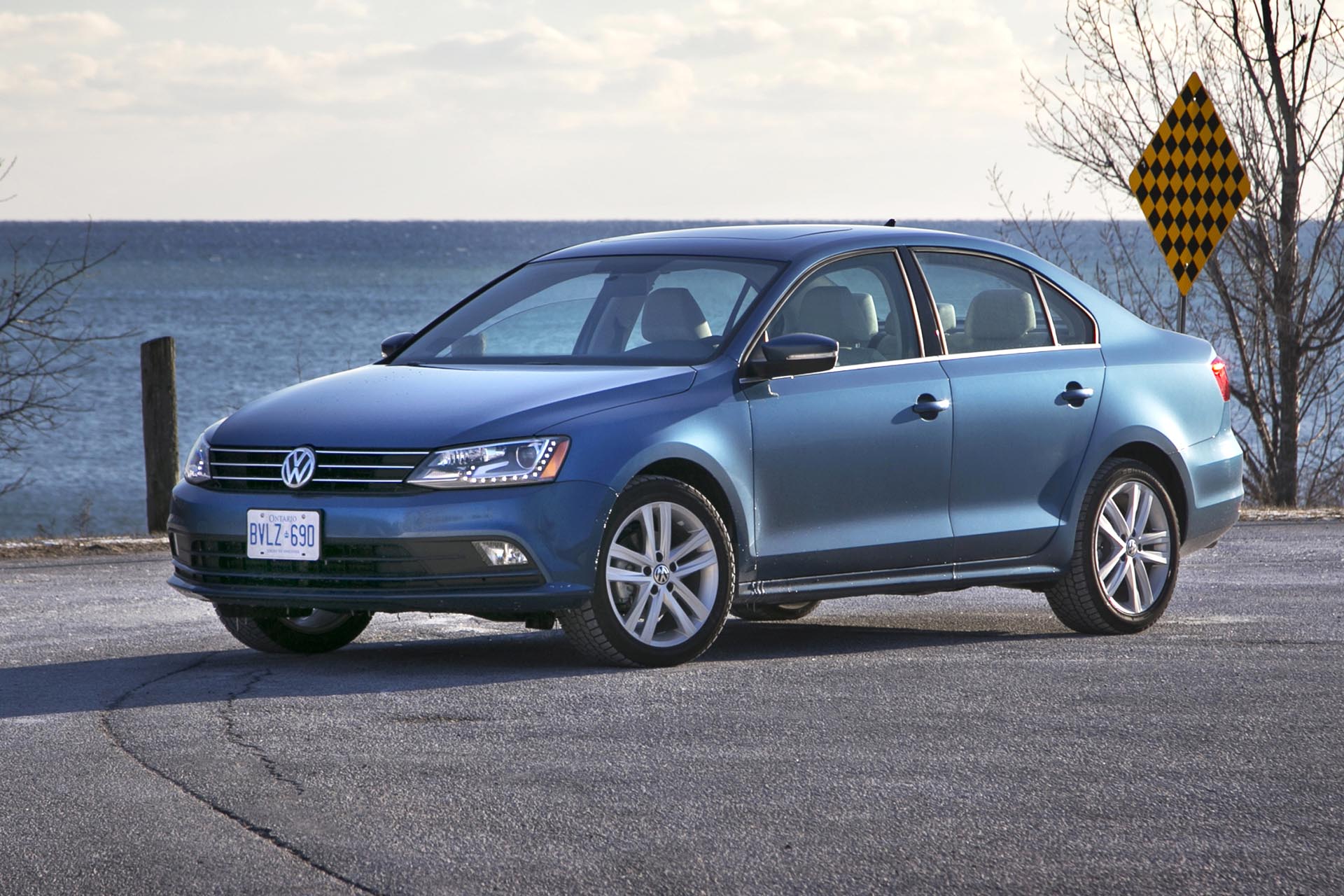
3. Volkswagen Jetta (Certain Model Years)
The Volkswagen Jetta, especially models from the early 2010s, has gained a reputation for cabin buzzing noises that detract from its otherwise refined driving experience. The primary culprit in many cases is the window assembly and door construction, where the window glass can sometimes become misaligned or improperly seated within the door frame.
This misalignment causes the glass to vibrate against the weather stripping or the internal window channel, producing a buzzing or humming noise that can worsen with changes in speed or road surface texture. This problem is exacerbated by VW’s relatively thin door panels and the use of plastic vapor barriers that can become loose and resonate under vibration.
The issue often extends beyond the doors to other interior trim components. Dash panels, glove compartments, and center consoles are known to develop rattles or buzzes due to aging clips and fasteners losing tension over time.
Some Jetta owners have reported that air vents or HVAC components can create a low-frequency buzz that seems to permeate the cabin, especially when the fan speed is set high.
These noises, while sometimes subtle, accumulate to create a general sense of auditory discomfort during driving. Volkswagen’s ambitious efforts to build a sporty yet practical sedan sometimes come at the expense of sound insulation and tight interior panel fitment.
Owners describe their experiences with the buzzing as frustrating, particularly because it undermines the Jetta’s image as a refined and comfortable compact sedan. Many report that the noise intrudes during quiet moments on smooth highways or at steady cruising speeds, making it difficult to enjoy music or hold conversations without raising voices.
Attempts to fix the problem at home often include tightening screws, adding foam padding behind panels, or applying weather stripping sealant, but these solutions only partially alleviate the symptoms. In more severe cases, dealer repairs or component replacements are necessary but may not guarantee a permanent fix.
The persistent buzzing problem in the Volkswagen Jetta illustrates how even well-designed vehicles can suffer from quality control or aging material issues that impact user experience. For a car competing in a segment where refinement and comfort are crucial, these noises can be a significant disadvantage.
Volkswagen’s later models have improved in acoustic engineering, but owners of earlier Jettas must often contend with the frustrations of a noisy cabin. This issue highlights the delicate balance manufacturers must maintain between cost, design, and long-term durability to deliver a truly satisfying ownership experience.

4. Honda Civic (Older Generations)
Older generations of the Honda Civic, particularly models from the late 1990s to mid-2000s, are notorious among enthusiasts and everyday drivers for persistent buzzing and rattling noises inside the cabin. The main source of these noises often stems from the window mechanism and door seal system.
Over time, the window regulators can wear out or become misaligned, causing the glass to vibrate or buzz against the rubber seals or internal channels. Additionally, Honda’s door panels in these older models often use plastic clips and fasteners that become brittle or loose with age, leading to panels that can vibrate at certain frequencies or under specific driving conditions.
In addition to door-related noise, other interior components such as the dashboard, glove box, and even the rearview mirror mounts have been reported to develop annoying rattles. Aging plastics can shrink or deform due to heat and time, losing their original tight fit and allowing vibration-induced noise to emerge.
The HVAC system in some older Civics has also been known to cause buzzing or humming, especially when the fan operates at higher speeds or when the blower motor is nearing the end of its service life. These noises combine to create a cabin environment that many owners describe as “tinny” or “buzz-heavy,” detracting from the otherwise reliable and practical nature of the Civic.
Driver feedback on the buzzing noise problem often emphasizes how the sounds can be surprisingly persistent and difficult to locate. The constant buzzing or rattling can interfere with music, phone conversations, and even concentration while driving. For many owners, the problem worsens as the vehicle ages and components continue to loosen or degrade.
While some buzzing can be reduced by tightening panels or replacing seals, a permanent fix often requires parts replacement or professional noise reduction treatments. These issues, although common in older Civics, have led some buyers to opt for newer generations with improved cabin insulation and build quality.
The buzzing problems experienced by older Honda Civics highlight a challenge faced by manufacturers when balancing affordability, durability, and refinement. While the Civic is praised for its reliability and efficiency, early models sometimes lack the acoustic polish expected in modern cars.
Honda has since improved materials and assembly techniques, but the legacy of cabin buzz remains a frequent point of discussion among long-time Civic owners. This case underlines the importance of continual refinement in manufacturing processes to enhance passenger comfort.
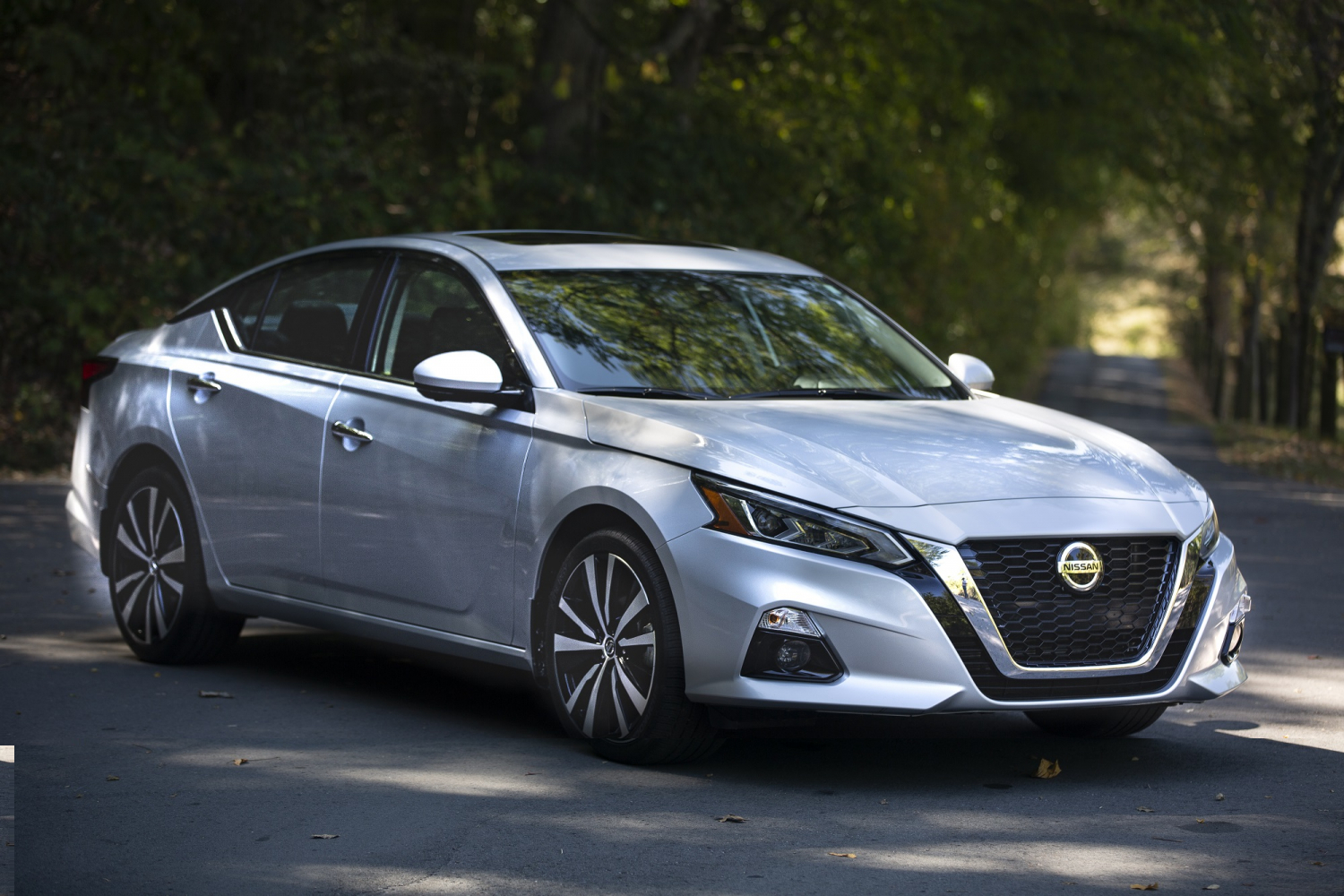
5. Nissan Altima (Certain Model Years)
The Nissan Altima, particularly mid-2000s models, has been reported by owners to suffer from persistent buzzing and rattling noises within the cabin, especially around the windows and doors. A common cause of this issue is the degradation or improper seating of window seals, which allow the glass to vibrate and produce buzzing sounds at certain speeds or road conditions.
The window regulators can also contribute, especially if they become worn or misaligned, causing the glass to buzz against the door frame or rubber molding. Nissan’s door panels from this era sometimes feature thinner materials and less sound insulation compared to competitors, amplifying the intensity of these noises inside the cabin.
The door panels and trim pieces in the Altima are another frequent source of rattling. Plastic clips and fasteners may loosen over time, causing trim components to vibrate independently from the vehicle’s structure. In some cases, the dashboard or center console has also been reported to buzz or rattle under certain engine vibrations or road conditions.
These noises can be intermittent or constant, making it challenging for owners to pinpoint and address the problem without professional diagnosis. The HVAC system’s blower motor can also generate a buzzing hum, particularly at higher fan speeds, which adds to the overall noise level inside the vehicle.
Owners often express frustration with the buzzing noises, noting that they diminish the driving experience and cabin comfort. Many report having to raise the volume of their audio systems or speak louder to compensate for the intrusive buzzing, which defeats the purpose of a comfortable and relaxing vehicle interior.
While some DIY fixes include replacing seals, tightening screws, or adding foam tape to dampen vibrations, these measures only provide temporary relief. The root causes often require replacement parts or professional soundproofing to mitigate effectively.
The buzzing problem in the Nissan Altima serves as a reminder that even popular, well-selling midsize sedans can struggle with interior noise management. While Nissan has made strides in newer models by improving build quality and material selection, earlier generations illustrate the ongoing battle manufacturers face in balancing cost efficiency with passenger comfort. This underscores the critical importance of thorough testing and quality control during vehicle development to minimize noise issues and enhance overall ownership satisfaction.
5 Cars That Don’t Get Cabin Noise
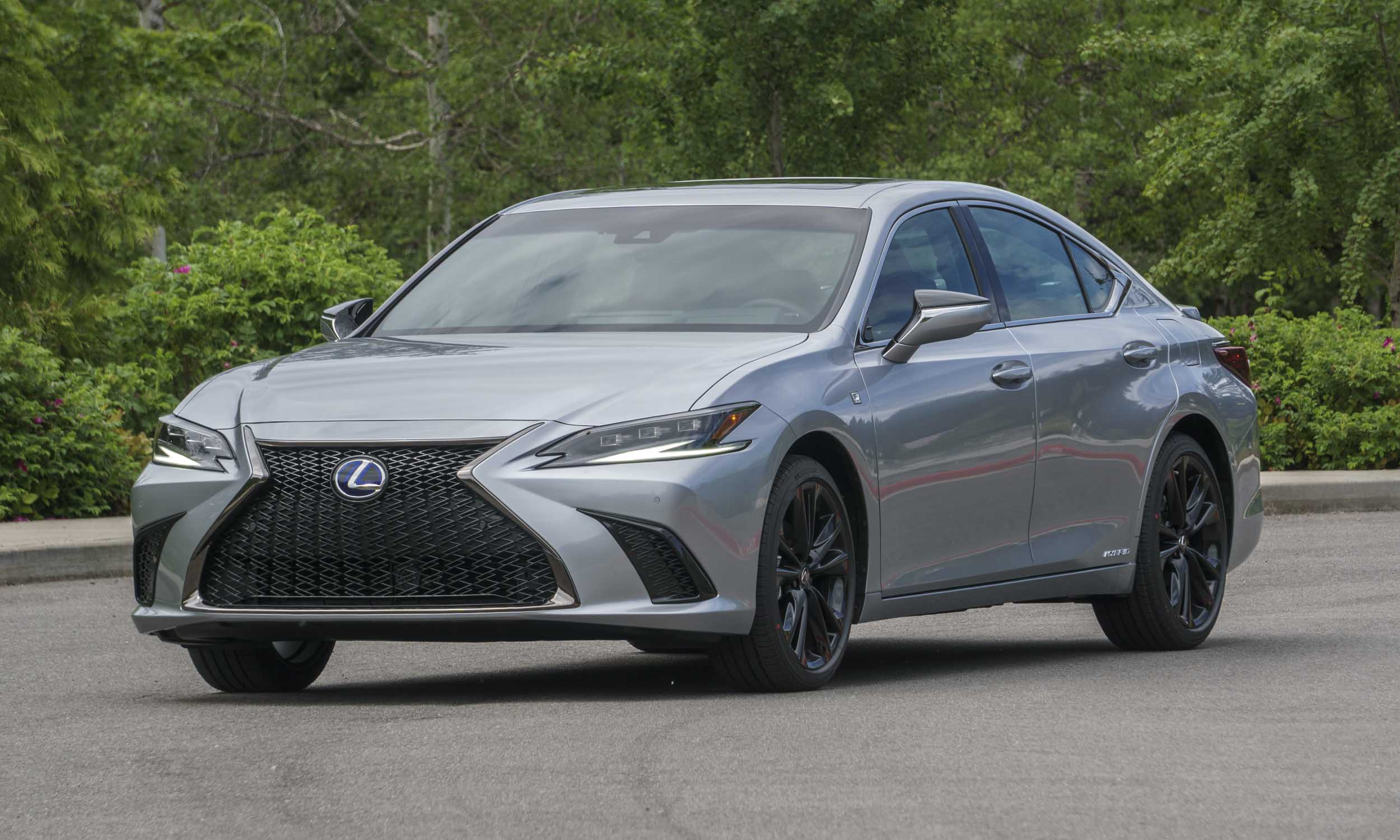
1. Lexus ES
The Lexus ES has long been heralded for its whisper-quiet cabin, a feature that elevates it beyond a mere luxury sedan into a sanctuary on wheels. Achieving this level of acoustic refinement requires a multi-faceted approach that Lexus meticulously engineers into every aspect of the vehicle’s design.
The windows feature laminated acoustic glass — a specialized, multi-layered construction that significantly reduces the penetration of wind noise and exterior sounds. This glass incorporates a sound-absorbing interlayer that disrupts noise waves, ensuring a much quieter environment inside, even at highway speeds where many cars become noisy.
The door seals on the ES are thick and robust, crafted from high-density rubber compounds that resist wear and maintain a perfect seal over years of use. This prevents any air leaks or vibrations that could cause rattles or buzzes, a common issue in less carefully built vehicles.
Beyond the windows and seals, the body structure of the Lexus ES incorporates extensive sound-deadening materials within the doors, floor, firewall, and wheel arches. These layers of insulation trap and absorb road noise, tire hum, and engine sounds before they can reach the cabin.
Additionally, Lexus engineers use hydraulic engine mounts that drastically reduce vibration transfer from the powertrain to the chassis, keeping the interior calm even during acceleration or uneven road conditions. The suspension system itself is tuned not only for ride comfort but to minimize noise and harshness, with components designed to absorb shocks quietly rather than transmit them.
The tires that come factory-fitted on the ES are also selected for low rolling resistance and reduced noise, contributing to the overall serenity.
Owners consistently praise the ES for its noise management, especially in scenarios where most cars falter, such as driving on gravel roads, cruising at high speed, or in stop-and-go traffic. The effect is not just about volume reduction but about creating an environment conducive to relaxation and clear communication.
The cabin noise reduction enhances the premium audio experience of the ES’s sound system, allowing occupants to enjoy music or podcasts with remarkable clarity and minimal interference. This peaceful atmosphere reduces driver fatigue and stress, making long journeys more pleasant and less taxing.
The Lexus ES’s dedication to acoustic comfort is part of the brand’s broader philosophy of “Omotenashi” — the Japanese concept of hospitality and care. This mindset translates into a car designed to care for occupants’ well-being by minimizing every conceivable distraction.
In an automotive world where performance, technology, and design often take center stage, the ES quietly asserts that comfort and refinement through acoustic engineering are equally important pillars of luxury. The result is a vehicle that feels luxurious not only because of what it offers on the surface but because of how thoughtfully it shields its occupants from the noise of the outside world.

2. Audi A6
Audi’s A6 is widely recognized for setting high standards in cabin refinement, and a significant part of that is its outstanding ability to suppress cabin noise. The vehicle employs triple-layer acoustic glazing on all side windows, a technology that layers three sheets of glass with sound-damping materials between them to dramatically reduce wind noise and exterior sound intrusion.
This glass technology, which is relatively rare even among luxury vehicles, is complemented by precision-engineered door seals that adapt to temperature changes, maintaining an airtight closure throughout a wide range of climates. Such attention to detail ensures that the A6’s cabin remains impervious to rattles, drafts, and unwanted noises, even years into ownership.
The Audi A6’s frame and body panels include high levels of structural reinforcements and sound-absorbing materials strategically placed to block vibrations and dampen sound waves.
Engineers install dense foam mats under the carpet and within door panels, along with felts in the roof lining and wheel wells. These materials work in unison to isolate occupants from road noise, engine vibrations, and the sounds of gravel or debris hitting the undercarriage.
Notably, Audi has integrated active noise cancellation technology in recent A6 models, which adds an electronic layer of sound control. Microphones placed inside the cabin detect low-frequency noise, and the audio system emits counter-phase sound waves that effectively cancel out these disturbances, further refining the cabin environment.
From a mechanical perspective, the A6 uses hydraulically controlled engine mounts that prevent engine vibrations from permeating the chassis. The exhaust system and turbochargers are also tuned to produce a refined, non-intrusive sound profile that avoids harsh drone at cruising speeds.
The suspension is calibrated not only for handling but also for noise suppression, with bushings and mounts designed to absorb road vibrations silently. Tires are carefully selected with noise-optimized tread patterns and rubber compounds that reduce tire roar, especially on smooth highway surfaces. These combined efforts mean the A6 delivers a ride that is both dynamic and hushed, a rare balance in the executive sedan segment.
The quietness of the Audi A6’s interior is often cited by owners as a key reason for their loyalty. The calm atmosphere allows drivers to concentrate better, improves the clarity of in-cabin conversations, and enhances the quality of music and audio entertainment.
This quietness also reduces fatigue on long drives, as the mind is not constantly bombarded by distracting noises. In an era where many cars sacrifice comfort for sporty performance or cutting-edge gadgets, the A6’s comprehensive approach to acoustic refinement reflects Audi’s commitment to engineering excellence and passenger comfort in equal measure.
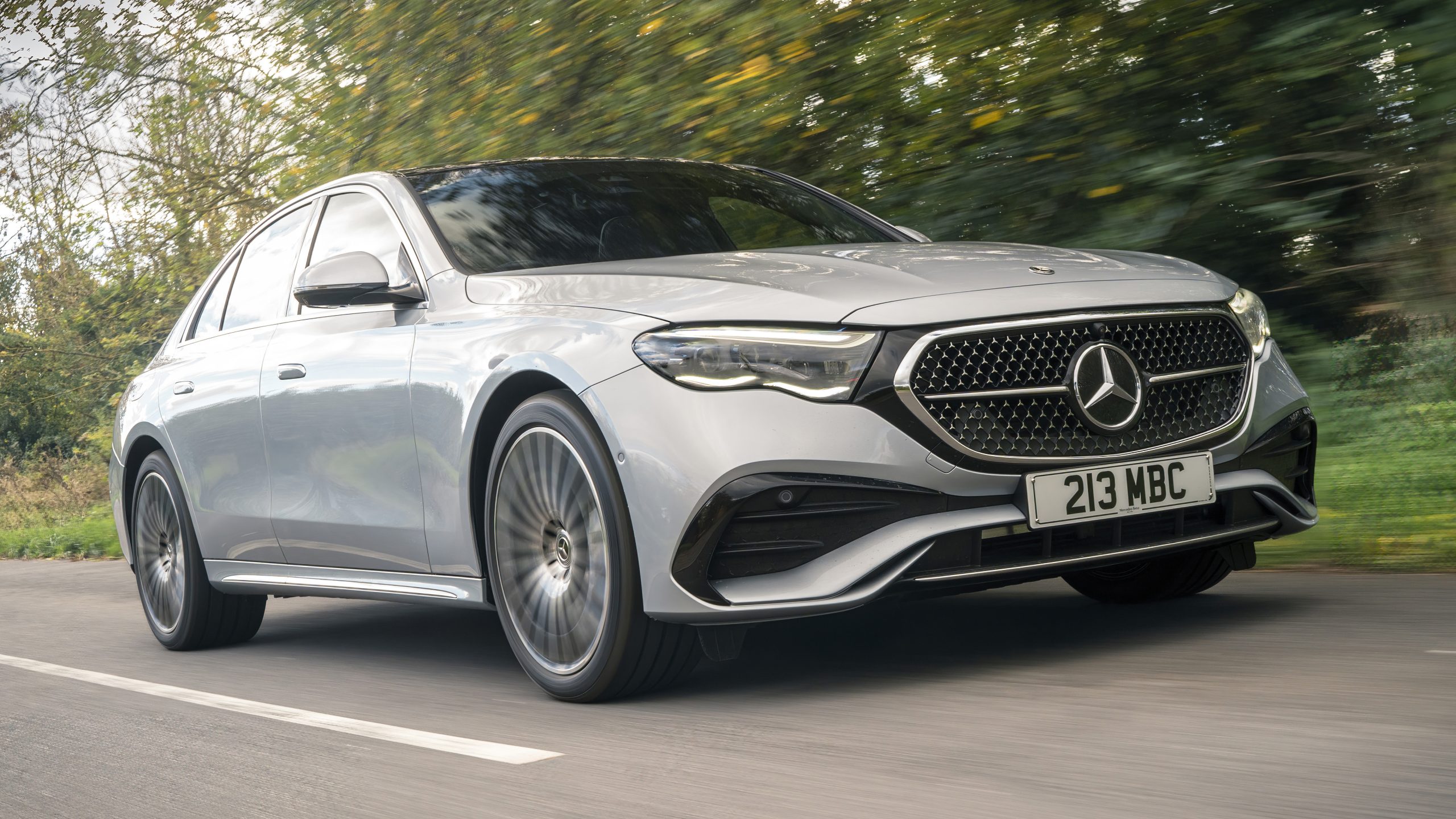
3. Mercedes-Benz E-Class
The Mercedes-Benz E-Class has long been synonymous with luxury, and an essential component of its prestige is the exceptional quietness of its cabin. Mercedes-Benz employs double-glazed, laminated windows that use thick layers of glass and acoustic interlayers to minimize the intrusion of wind noise and environmental sounds.
This design is particularly effective in reducing high-frequency sounds, such as the whistle of fast-moving air around side mirrors or door seals.
The doors and roof are heavily insulated with multi-layer felts, foam padding, and sound-absorbing mats that prevent road noise and engine vibration from penetrating the cabin. The weatherstripping is engineered with precision, using durable, high-density rubber that maintains tight seals over time without shrinking or cracking.
The chassis and body structure of the E-Class are constructed to minimize the transmission of vibrations. High-strength steel reinforcements reduce flex and creaking noises, while strategically placed sound-deadening materials absorb shocks and vibrations before they reach the passenger compartment.
The suspension system, including adaptive dampers and bushings, isolates occupants from road imperfections, smoothing out harsh bumps and eliminating the thumps and rattles common in lesser vehicles. Additionally, Mercedes-Benz fits the E-Class with tires specifically designed for quiet operation, using tread patterns and rubber compounds optimized to reduce rolling noise.
Under the hood, the E-Class’s engine mounts use advanced hydraulic technology that dampens vibrations and engine noise, preventing them from entering the cabin. The exhaust system is tuned to produce a refined sound that enhances the driving experience without becoming intrusive or fatiguing.
Even the heating and ventilation system is carefully designed to operate silently, with insulated ducts and low-noise fans preventing whistling or humming. Every mechanical and acoustic component works in harmony to create an interior space that feels detached from the outside world, almost as if the car floats above the road.
The peacefulness inside the E-Class is not merely a convenience but a critical aspect of the vehicle’s overall safety and luxury appeal. A quiet cabin allows drivers to remain focused on the road and less distracted by extraneous noise.
Passengers can enjoy conversations or rest comfortably without strain, making the E-Class an ideal vehicle for long trips, chauffeur-driven commutes, or executive travel. Mercedes-Benz’s meticulous approach to noise reduction underscores its commitment to craftsmanship and innovation, solidifying the E-Class’s reputation as one of the quietest, most refined vehicles in its class.
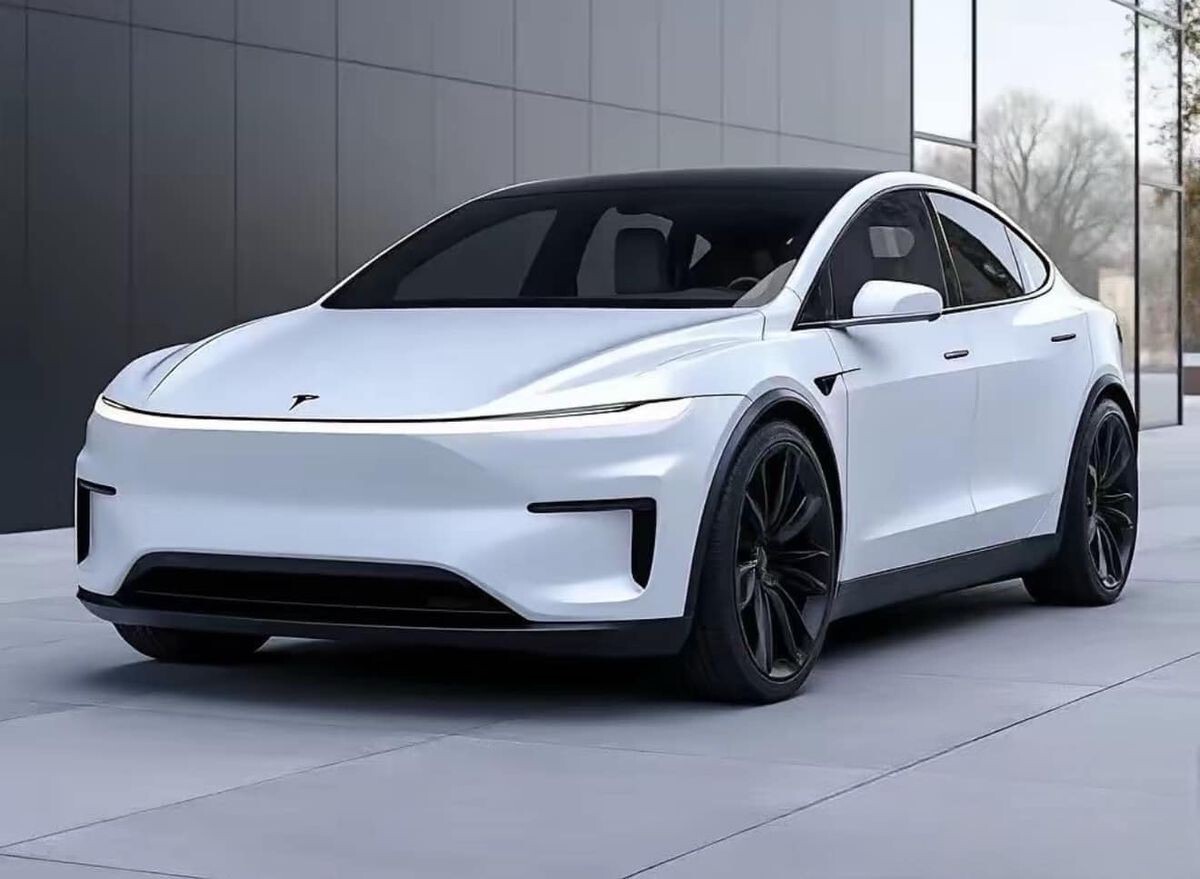
4. Tesla Model S
The Tesla Model S redefines the quietness of the modern car, starting with the fundamental advantage of its electric powertrain. Unlike traditional internal combustion engines, Tesla’s electric motors operate almost silently, eliminating the rumbling, vibration, and exhaust drone that often invade combustion engine cabins.
This intrinsic quietness provides a perfect foundation for a truly hushed interior. Tesla enhances this by using thick, laminated acoustic glass throughout the cabin, which greatly reduces wind noise and road sounds that typically become more apparent in EVs due to the absence of engine masking noise.
Tesla’s engineers have designed the body and seals with exacting precision to prevent wind infiltration and rattles. The door seals use multiple layers of rubber and foam to ensure a tight fit and dampen vibrations. Additionally, the underbody is fully enclosed and treated with sound-absorbing materials to limit road noise caused by tires and surface irregularities.
Tesla’s choice of low rolling resistance tires with noise-reducing tread patterns further minimizes tire roar inside the cabin, maintaining the serenity that customers expect from a premium EV.
One innovative feature Tesla employs is active noise cancellation, which adds an additional layer of sound control. Microphones inside the cabin detect ambient noise, and the car’s sound system produces inverse sound waves to cancel these sounds out in real-time.
This technology significantly reduces perceived cabin noise, especially at highway speeds or on rough surfaces. The Model S’s suspension system is also designed to smooth out road imperfections quietly, with soft bushings and carefully tuned dampers that prevent harsh vibrations from reaching occupants.
The overall result is a driving experience marked by an almost eerie silence, where passengers often report feeling as if they are floating inside a cocoon. This quietness enhances the futuristic feel of the Model S and complements its advanced technology and minimalist design.
The lack of intrusive noise allows occupants to fully appreciate the sound quality of Tesla’s premium audio system and makes the cabin an ideal environment for conversation, concentration, or relaxation during long trips. In many ways, Tesla’s focus on cabin quietness is as revolutionary as its electric drivetrain, setting new standards for comfort and refinement.
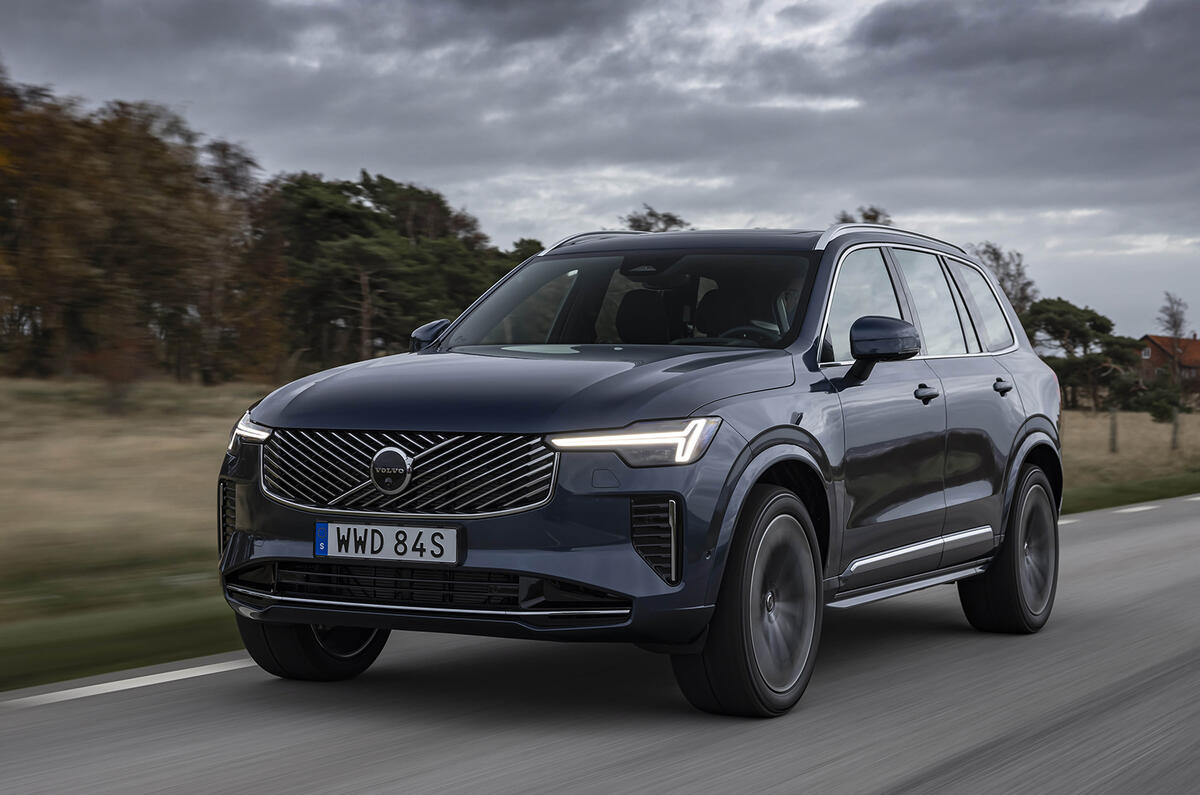
5. Volvo XC90
The Volvo XC90 stands out in the luxury SUV segment for its exceptional acoustic comfort, rooted deeply in the brand’s Scandinavian design ethos that prioritizes well-being and serenity. Volvo employs laminated acoustic glass on all windows, a key component that blocks out high-frequency wind noise and muffles external sounds significantly.
The door frames and seals use dense, multi-layered weather stripping to ensure a snug, rattle-free fit that prevents air leaks and vibrations. This is particularly important in an SUV, where larger door sizes and increased cabin volume can sometimes make controlling noise more challenging.
Volvo’s meticulous sealing and insulation work ensure that the XC90’s cabin is peaceful, regardless of driving speed or weather conditions.
The vehicle’s body structure incorporates thick sound-absorbing materials in critical areas such as the firewall, floor, roof, and wheel wells. This multi-layer insulation strategy blocks noise from tires, engine, and road surfaces before it reaches the passenger compartment.
The suspension is tuned to prioritize comfort, featuring bushings and mounts that absorb shocks quietly and effectively. Tires chosen for the XC90 emphasize low rolling noise, further reducing the potential for intrusive sound within the cabin. Even on rough or uneven terrain, the XC90 maintains a composed, calm interior environment free from rattles or harsh vibrations.
Engine noise and mechanical vibrations are minimized through the use of sound-deadening engine bay liners and hydraulic mounts that isolate the powertrain’s movements from the chassis. Volvo also designs the exhaust system with a muted, refined tone that avoids harshness during acceleration.
Inside the cabin, the HVAC system’s air vents are engineered to eliminate whistling or humming, maintaining the overall calm ambiance. Panels and trim pieces are tightly fastened with sound-absorbing materials to prevent buzzes and creaks, further contributing to a quiet ride.
Owners of the Volvo XC90 often highlight the vehicle’s quiet interior as a key factor in its appeal, especially for families and professionals who spend significant time commuting or traveling. The serene cabin environment helps reduce stress and fatigue, allowing occupants to focus on conversations, entertainment, or simply relaxing.
This dedication to acoustic comfort complements Volvo’s reputation for safety and quality, offering a complete package of luxury, practicality, and peace. In a segment crowded with capable SUVs, the XC90’s noise management stands as a testament to Volvo’s commitment to thoughtful design and occupant well-being.
ALSO READ: 5 Vehicles That Qualify for Insurance Discounts and 5 That Cost More Each Year
The interior sound environment of a vehicle is more than just a background feature; it profoundly influences how comfortable, focused, and relaxed drivers and passengers feel during every journey. As this article has highlighted, some cars achieve near-silent cabins through meticulous engineering and quality materials, elevating them into the realm of luxury and a refined driving experience.
Others struggle with persistent buzzing, rattling, and intrusive noise that can quickly wear on occupants’ nerves and diminish the overall appeal of the vehicle.
Vehicles like the Lexus ES, Audi A6, Mercedes-Benz E-Class, Tesla Model S, and Volvo XC90 showcase what is possible when manufacturers prioritize sound insulation, aerodynamics, and mechanical refinement.
These cars demonstrate that with the right approach—incorporating acoustic glass, thick seals, layered insulation, vibration dampening, and even active noise cancellation—drivers can enjoy serene interiors that transform mundane drives into peaceful retreats. Their quiet cabins not only enhance comfort but also improve safety by allowing clear communication and reducing fatigue.
Conversely, cars such as the Nissan Versa, Jeep Wrangler, Mini Cooper, Ford Mustang (Fifth Generation), and Volkswagen Golf (Mk5) serve as reminders that noise issues often stem from design trade-offs, budget constraints, or aging components.
Whether it’s thin insulation, exposed door seals, aggressive tire tread, or loose interior panels, these factors combine to create buzzing and rattling environments that distract and annoy. While some owners accept these flaws as part of their vehicle’s character, others find that constant noise reduces satisfaction and even leads to costly repairs or aftermarket soundproofing efforts.
This contrast underscores an important consideration for car buyers: cabin noise should not be overlooked when assessing a vehicle’s quality and suitability. It’s wise to test drive a car at highway speeds, listen carefully for wind and road noise, and inspect for rattles or electrical buzzes. Understanding how a car performs acoustically can prevent unpleasant surprises and ensure a more enjoyable driving experience.
For manufacturers, the message is clear as well. Investing in sound engineering is crucial not just for premium segments but across all classes of vehicles.
As consumers become more discerning, quiet cabins are increasingly seen as markers of craftsmanship and value. Moreover, as electric vehicles rise in popularity, the absence of engine noise raises expectations for enhanced attention to other sources of cabin sound, making acoustic refinement even more critical.
In conclusion, whether your priority is a peaceful commute, a relaxing road trip, or a refined driving environment, paying attention to cabin noise can significantly elevate your experience. Quiet cars invite calm and focus, making every journey more pleasurable, while noisy cabins remind us of the importance of detail in automotive design.
By choosing wisely and understanding these nuances, drivers can enjoy not just the destination but every moment spent inside their vehicles.

